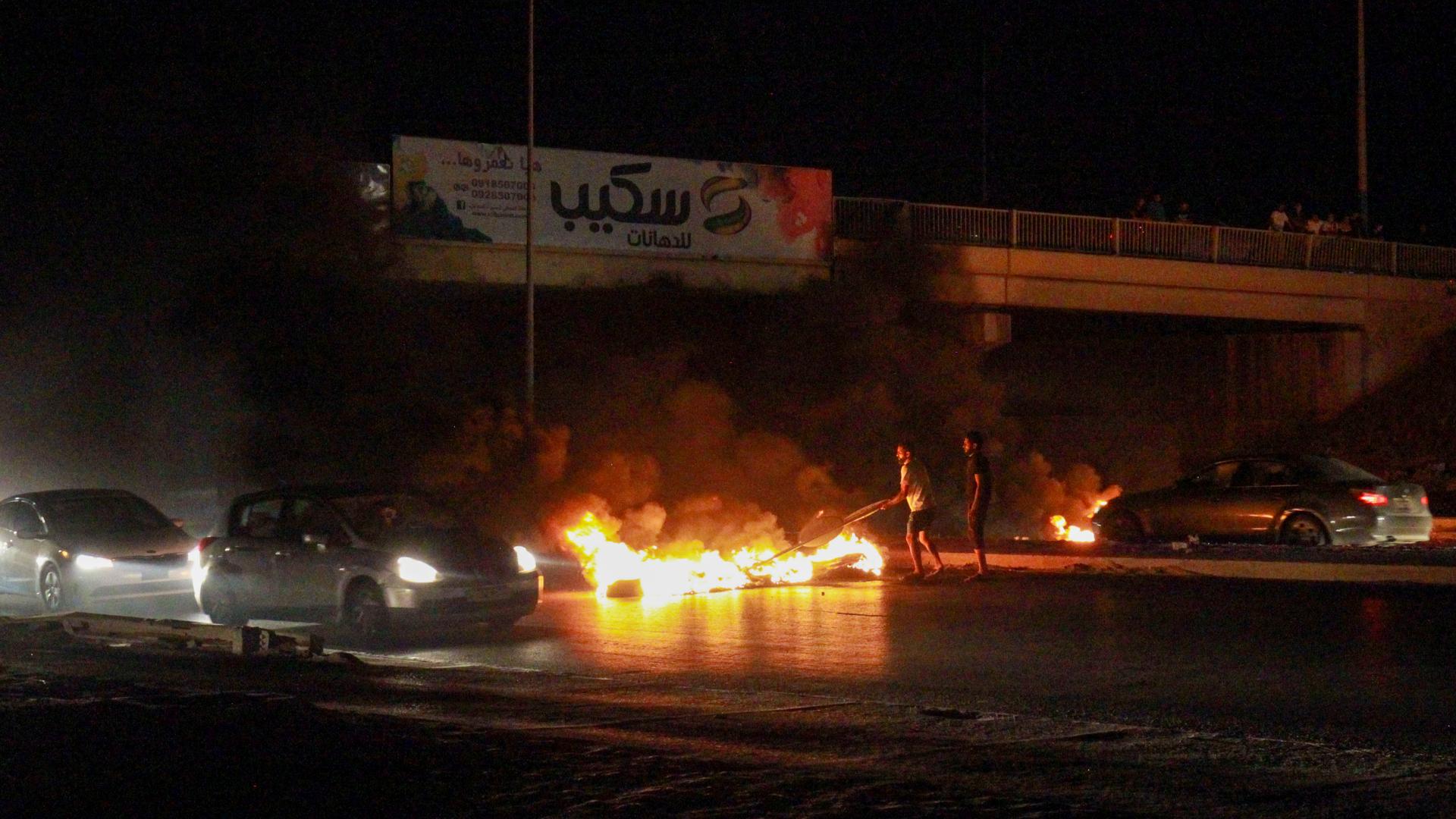Civil unrest in eastern Libya’s Benghazi is a strong signal that cracks are beginning to appear in Khalifa Haftar’s strongholds.
Last week dozens of protesters rallied and set fire to the government’s headquarters in the Libyan city of Benghazi, the second-largest city, over worsening living conditions, power cuts, and corruption at the hands of warlord Khalifa Haftar’s militia leaders.
While Haftar controls eastern Libya and large territories in the south, his grip on power has been weakened. The head of the self-declared Libyan National Army (LNA) has seen his authority challenged more than once by the Tobruk-based House of Representatives (HoR), based in eastern Libya.
The ongoing conflict in Libya can be traced back to the 2011 uprising against the country’s long-time ruler, Muammar Gaddafi. The 2011 NATO intervention managed to topple the Libyan dictator with the help of anti-Gaddafi revolutionary forces.
However, even with Gaddafi gone, the new rulers failed to establish stable political structures. The country steadily fell into conflict inflamed both by internal disagreements underlying the rivalry of diverse political-military forces, as well as foreign interference by regional and international actors seeking their own political and strategic interests.
As a consequence, the Libyan people continue to suffer from interlinked political and economic crises which weaken state institutions and dent the population’s prosperity significantly. Rival militias, particularly in eastern Libya, continue to compete for power.
A weak state allowed these armed groups to sustain their activities through the illegal sale of oil and other contraband. In the east, but also in the rest of the country, increasingly sophisticated revenue-generating schemes capitalise on the weakness of state structures.
The Libyan economy depends heavily on hydrocarbon exports. According to the International Monetary Fund (IMF), oil accounts for over 90 percent of revenue and during Gaddafi’s rule, Libya produced some 1.6 million barrels per day. The Libyan economy has experienced a significant decline because of fighting over the control of oil fields, naturally resulting in a decline in production.
Haftar’s militias’ blockade of oil terminals since January 2020 has further deepened the economic crisis. Oil production has plummeted to 100,000 barrels per day from 1.14 million in December 2019.
According to Libya’s state National Oil Corporation (NOC), this has resulted in financial losses of approximately $9.5 billion. Although recently, the warlord has committed to ending a months-long blockade of oil facilities, some skirmishes caused by Wagner mercenaries and other militias makes prospects for reopening oil fields and ports rather bleak.
Since April 2020, the UN-backed Government of National Accord (GNA), with considerable assistance from Turkey, has broken the siege of Tripoli by Haftar and his LNA, backed by the United Arab Emirates, Egypt, Russia and France.
Haftar’s losses in the west have brought fissures within his eastern camp. As a result, Haftar seems to no longer enjoy the lead role he previously had in that part of the country. There have been strong dissensions between Haftar’s LNA and the Tobruk based parliament HoR after a period of close collaboration.
For instance, both the UN-backed government and the east-based parliament have recently agreed to a UN plan to remove military forces from Sirte and the eastern oil crescent, where much of Libya’s oil infrastructure is located.
At the same time, Haftar and his LNA have dismissed the latest truce announcement. Haftar’s answer to the ceasefire could indicate divisions between the Tobruk-based parliament and the warlord.
As a consequence, Haftar’s militias continue, reportedly, to violate the truce by firing grad rockets at the UN-backed government forces position in the region. Thus, the warlord would probably find it useful to reignite a confrontation with the UN-backed government or launch an all-out military assault to regain influence and be included in future political processes.
The ongoing conflict has led to considerable proportions of youth unemployment and economic imbalance; large-scale electricity, water and gas cuts; years of corruption; and a failure to combat the spread of Covid-19. All of these factors have prompted protests not only in Benghazi but also elsewhere, including in western Libya.
The elites need to be more attentive to the needs of the population. The protracted civil war has caused enormous pain and economic harship. Therefore, it is time to take a more sincere stance towards peace.
Libya requires a permanent ceasefire to be held across the country, particularly around Sirte, and then broader economic reform. The subsequent steps must include the reform of the economic institutions, removing the quasi-parallel institutions in the east of Libya, and transparency in terms of the distribution of oil wealth.
If there is no practical solution to the conflict, Libya’s economic health will continue to deteriorate. Rebuilding Libya’s economy will take resources and commitment on the part of the UN-backed government. For that reason, international institutions have a responsibility to help the government establish a sustained strategy, focusing on security, institution building, and economic growth.
Author: Ferhat Polat
Ferhat Polat is a Deputy Researcher at the TRT World Research Centre. He is a PhD researcher in North African Studies at the Institute of Arab and Islamic Studies in Exeter with a particular focus on Turkish Foreign Policy.
Source










Discussion about this post